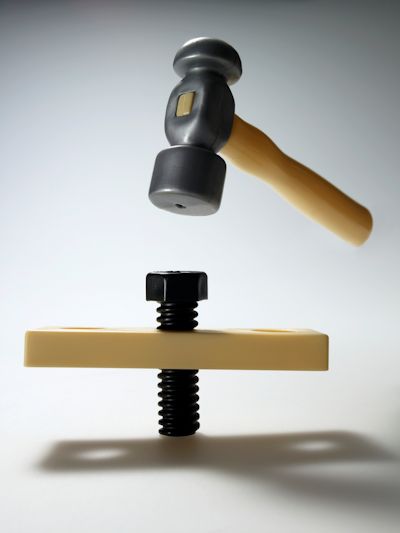Hand Tool Safety
Tools that are manually powered are called hand tools. Hand tools include anything from axes to wrenches.
Common hand tools include: tin snips, hatchets, screw drivers, hammers, pliers, anvils, wrenches, files, rasps, saws, punches, chisels, planes, hand-held boring tools, and pop rivet guns.
Wrong Tool for the Job
The greatest hazards posed by hand tools result from misuse and improper maintenance.

Some examples include the following:
- If a chisel is used as a screwdriver, the tip of the chisel may break and fly off, hitting the user or other employees.
- If a wooden handle on a tool, such as a hammer or an axe, is loose, splintered, or cracked, the head of the tool may fly off and strike the user or other employees.
- If the jaws of a wrench are sprung, the wrench might slip.
- If impact tools such as chisels, wedges, or drift pins have mushroomed heads, the heads might shatter on impact, sending sharp fragments flying toward the user or other employees.
Knowledge Check Choose the best answer for the question.
2-1. What do the greatest hazards posed by hand tools result from?
You forgot to answer the question!
